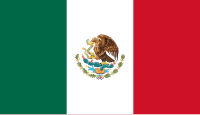A Visual Journey Through Flag Evolution: From First Flags to Present Day
Flags are more than just colorful pieces of fabric. They represent nations, their history, and their identity. Each flag tells a story, often reflecting significant events and cultural values. But have you ever wondered how these flags came to be? Did they always look the way they do now? In this article, we'll embark on a visual journey through flag evolution, comparing the first flags of various countries with their current designs.
From Humble Beginnings to Iconic Symbols
The evolution of flags is a fascinating journey that often reflects the changing political landscape and national identity of a country. Let's delve into a few examples to see how flags have transformed over time:
1. The United States of America
The first American flag, known as the Grand Union Flag, was flown in 1776 during the American Revolution. It featured 13 stripes representing the thirteen original colonies, but instead of stars, it had the British Union Jack in the canton (upper left corner). This flag symbolized the colonies' desire for independence while still acknowledging their ties to Britain.
After the revolution, the iconic Stars and Stripes flag was adopted in 1777. It featured 13 stars representing the original colonies and 13 stripes representing the united states. Over time, as new states joined the Union, the number of stars increased to reflect the expanding nation. The current American flag, with 50 stars and 13 stripes, was adopted in 1959 after Hawaii became the 50th state.
| Flag | Year | Description |
|---|---|---|
 |
1776 | 13 stripes representing the colonies, with the British Union Jack in the canton. |
 |
1777 | 13 stripes and 13 stars representing the original colonies. |
2. Canada
Canada's first flag, the Union Jack, was flown from 1867 to 1965. This flag symbolized Canada's ties to Great Britain. However, a growing sense of national identity led to the adoption of a new flag in 1965. The current Canadian flag, known as the Maple Leaf Flag, features a red maple leaf on a white background, symbolizing the country's natural beauty and its place in the world.
| Flag | Year | Description |
|---|---|---|
 |
1867 | Symbol of Canada's ties to Great Britain. |
 |
1965 | Red maple leaf on a white background, symbolizing Canada's natural beauty and identity. |
3. Mexico
Mexico's first flag, adopted in 1821, featured a green eagle perched on a cactus, devouring a snake. This flag was inspired by the Aztec legend of the founding of Tenochtitlan. The current Mexican flag, adopted in 1968, retains the eagle and cactus but features a more modern design with a tri-color scheme of green, white, and red. The eagle now stands on a rock and the snake is no longer being devoured. The colors represent hope (green), purity (white), and blood (red).
| Flag | Year | Description |
|---|---|---|
 |
1821 | Green eagle on a cactus, devouring a snake, representing the Aztec legend of Tenochtitlan. |
 |
1968 | Modern design with green, white, and red colors representing hope, purity, and blood. |
A Window into History
These are just a few examples of how flags have evolved over time. Each flag tells a story, reflecting the history, values, and aspirations of a nation. By comparing first flags with current ones, we gain a deeper understanding of how countries have changed and grown over the years. It's a reminder that flags are not merely symbols, but powerful visual representations of our shared heritage and national identity.
So, the next time you see a flag waving in the wind, take a moment to appreciate its history and the story it tells.


